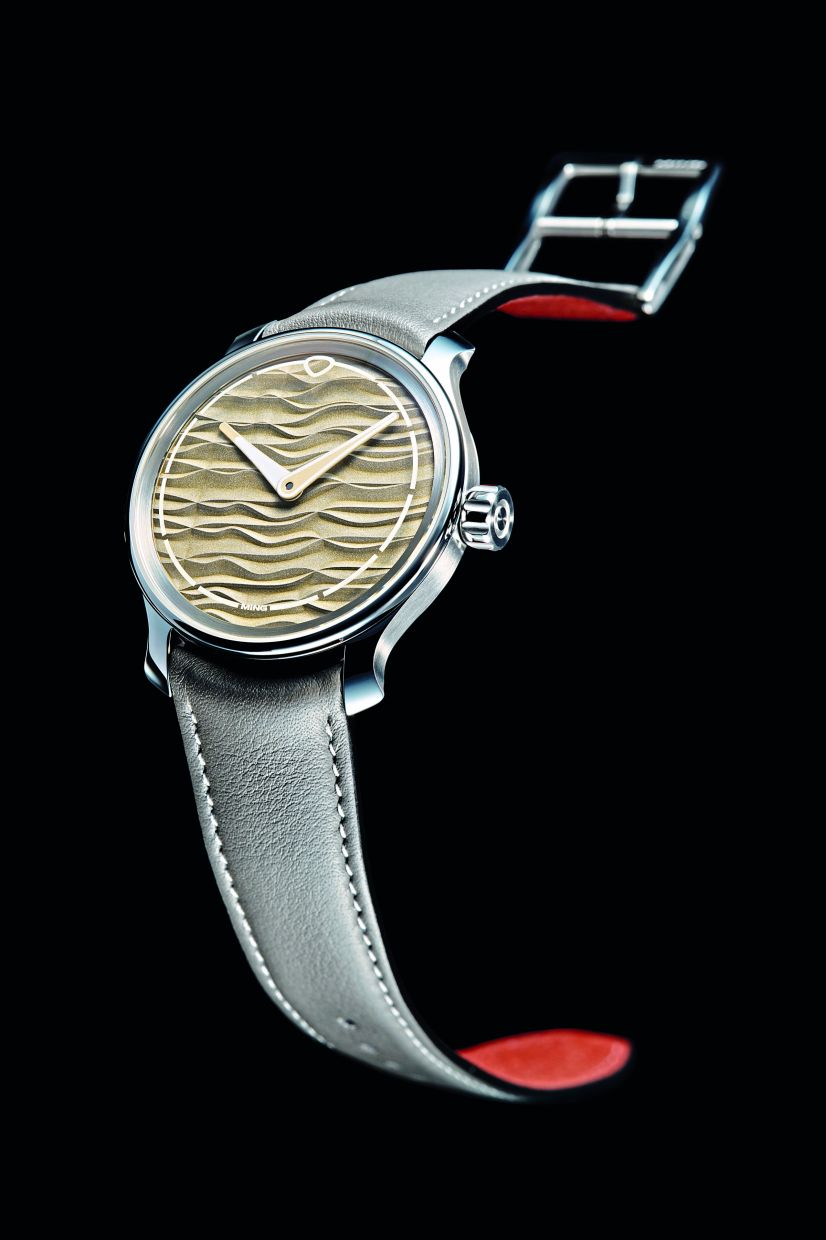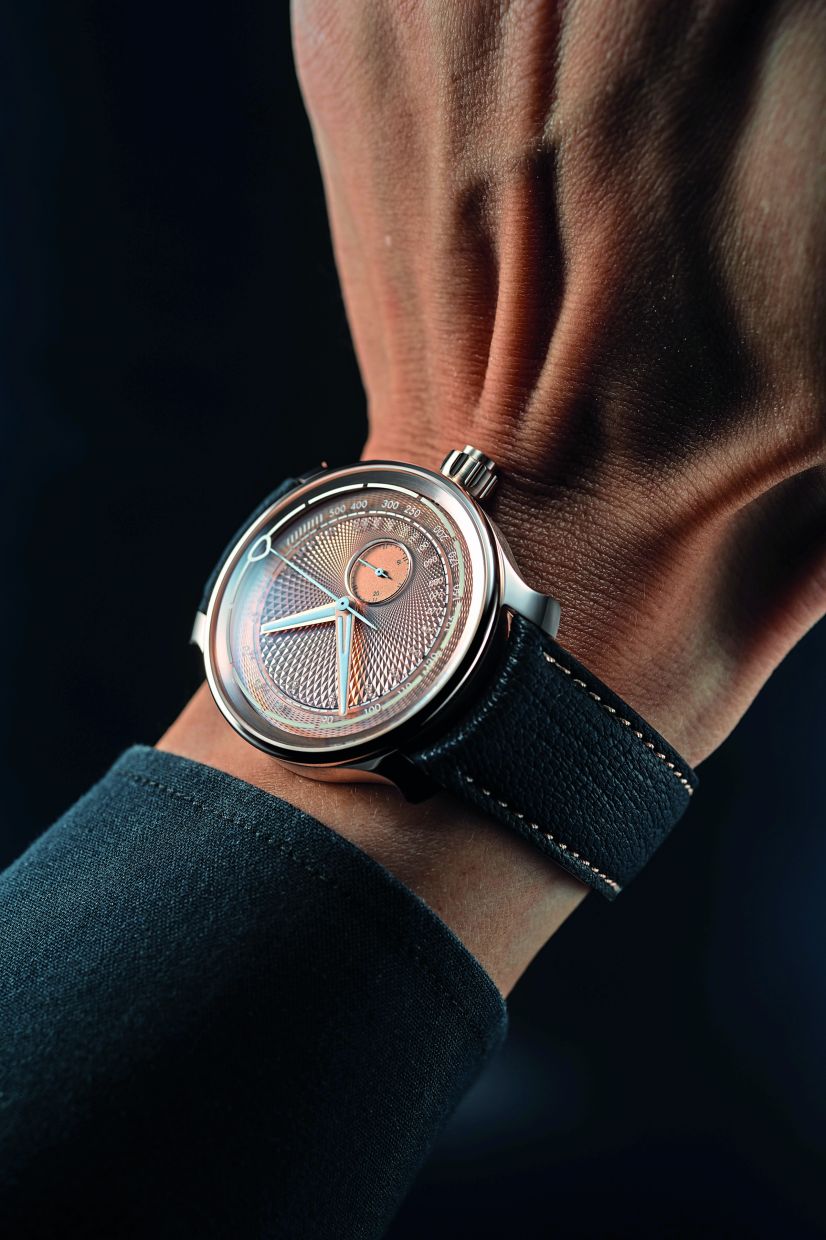Pushing the boundaries of its expertise, MING created the LW.01 Manual and LW.01 Automatic which it perceives as the world’s lightest mechanical wristwatches.
IN the last 10 years, the watch market has seen immense growth in both volume and value. This has not only made some premium watch brands all the more covetable and rare — with growing wait lists — but it has also propped up the second-hand or pre-owned segment as well. This demand has also fuelled the independent watch market, with numerous start-ups and microbrands arriving on the scene to compete for a piece of this lucrative pie.
Among those who are plying their trade in this segment is Horologer MING. Releasing their first timepiece in 2017, the brand has thus far captivated the market for their range of well-designed, high quality watches. And for Malaysian enthusiasts and collectors, MING also holds a place of pride for being proudly home grown.
According to Ming Thein, the founder and chief creative of Horologer MING, his passion for watches took root from a young age following an interest in all things mechanical.
“I did an internship one summer whilst studying physics at university and made a little money; a decent watch was something I’d desired but knew nothing about,” he explains.
Wanting to spend that hard earned money carefully, he started doing some research online and engaged the watch community. Subsequently he started putting some of his engineering knowledge to use to try to create a kind of watch that he would want to have if there were no restrictions.
He admits that early on the practice was essential to establish the design language that is the core of MING today. “By the time we launched our first watch, I’d probably created 50 or 60 at that point — the design was very deliberate.”
Born in KL
Taking the plunge to eventually launch their own brand, Thein admits that the objective early on was to create something that they as collectors would like to wear, and something that was not offered in the market at the time. “It would be reasonably priced, well designed, good quality, with intelligent compromises made where required to achieve this.”
At the time — around late 2014 and early 2015 — it was also the point at which some Swiss suppliers were opening up to contract manufacture and the rest of the world was starting to accept and trust e-commerce for higher end products. Adds Thein, “We had the ideas, a way to produce and the channel to sell them — without having to rely on external retailers.”
The founder stresses that fundamentally Horologer MING is really an international brand that’s based in Malaysia.
“We use the most suitable partners and suppliers for a given component or task, and almost none of them are local. Most of the founders just happen to live here or have other business interests here.”
He is quick to add though that there is really no ecosystem in Malaysia for watchmaking and the business environment is really not supportive either. Elaborating further, he explains that even though almost all the product is exported, they still pay full SST on all imports, and they cannot recognise R&D as a tax expense.
“If anything, it was probably one of the worst places to start a premium watch brand.” But Thein and his partners did it anyway and years on, they’re continuing to fly the Malaysian flag in the world of horology.
Take us back to the early days starting MING – what were your biggest challenges?
Being taken seriously — not just by customers, the public, but also by suppliers and the rest of the industry.
It’s a lot better now, but some friction still exists. We also had supply chain issues and never ending delays as the watch market surged in the last few years — as a small brand, you simply get deprioritised.
It took us some time to both filter out the dependable suppliers and build in sufficient buffer with subsequent models, but I’m happy to say that lead times are finally under control — our most recent mainstream launches begin deliveries in weeks or months instead of up to a year at one point.
How did it feel to be awarded the 2019 Grand Prix d’Horlogerie de Genève (GPHG): Horological Revelation Prize?
Pretty surreal. We were at the time a two-year-old brand, and we were receiving an award that had only been given to Ressence and Laurent Ferrier in the preceding 20 years of awards, for what was probably the cheapest watch entered into the entire competition — this was a huge deal. I think it was probably the single event that cemented our credibility in the industry.
MING retires watches after the production ends, was there a specific reason for this?
Early on, we had to order components in batches. Then lead times got so long — up to 36 months at one point — that it made no sense to do a second or third run, because there is simply no way to predict demand that far out. It’s also not smart business to lock up your limited resources in this way when there are so many more models you want to develop and launch.
Our pace of development and growth would simply not have been possible if we had done repeated runs early on. In some cases, it’s also not possible to do another run because some movements may no longer be available — we have no choice but to make a fixed edition in those situations.
That said, now that we have more control over our supply chains and production, as well as a maturing design process — we are considering doing annual production cycles for more popular models.
You also offer watches across a wide range of prices, was this intentional to ensure a broader customer base?
Actually, it’s because we have a lot of ideas and they fit different price points. There isn’t always a desire to wear or make the most expensive or cheapest thing; collectors want variety and tiered pricing is a natural consequence of offering a diverse product range.
What sort of user experience do you want to give your customers?
We prefer the term customer experience because a mechanical watch isn’t a product of necessity anymore — fundamentally, it’s something people buy to feel good. We want our customers to be happy with the entire experience; it means providing a friction-free buying experience, a consistently high level of service, a unique and high quality product, and future support.
It means that we sell direct and interact with each customer personally; that we continually revise the ecommerce system after every launch to try and make checking out easier and faster — to the extent of developing our own back end with cart holds and partnering with checkout.com for payment processing support — and of course continually improving our watches with every new model.
We have service facilities and partners in KL and Switzerland, and our main partner company has been in business since 1902 — we ourselves are in our 7th public year and 9th year since the first project began.
We noticed you use a wide range of movements for your model, is this because of the different needs of each watch designed?
No one movement has the ability to be adapted to every possible function. Aside from functional requirements different design requirements mean that movements have to fit in different physical spaces.
We do tend to engineer around a few families of movements as the investment required for customisation is high. There are also plenty of other one-off exotics that we use when we can. To a collector, variety is the spice of life — nobody wants to eat the same thing at every meal.
Being in the business now for the past several years, what is your goal for the company as it looks ahead into the future?
It’s been clear for a while that we need a physical presence in Switzerland both for proximity to supply chain as well as to support future growth — the aim is to bring more of our production internally to have better control over the whole process, and to further improve quality levels. We are also doing more of the engineering portion internally — previously we relied on Swiss partners for this, but now I am doing a large chunk of it out of KL.
Ironically, despite us setting up a Swiss facility and having a bigger presence there than ever, a key legal requirement for the ‘Swiss Made’ classification is that the engineering is done in Switzerland — so we will no longer be using ‘Swiss Made’ on watches engineered in KL, even though they’re assembled by us in Switzerland with components from the same sources as before.
This article first appeared in Star Biz7 weekly edition.









